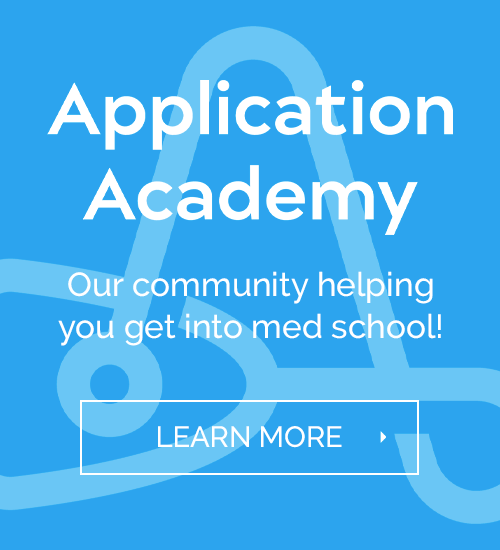Apple Podcasts | Google Podcasts

Session 110
Clara from Blueprint MCAT (formerly Next Step Test Prep) is back for some more Next Step full-length 10 breakdown—this time with CARS passage 2.
Check out MedEd Media! We have a new podcast, the TMDSAS Podcast. The TMDSAS stands for Texas Medical and Dental School Application Service, which is the application system for the public Texas medical schools.
[02:05] Passage 2
Salmonellosis is an infection with bacteria called salmonella. Most persons infected with salmonella develop diarrhea, fever, and abdominal cramps soon after infection. But the illness usually self-resolves after 4-7 days. However, in some persons, the diarrhea may be so severe that the patient needs to be treated. The salmonella infection may spread from the intestines to the bloodstream and can cause death unless the person is treated properly with antibiotics. Such blood-born salmonella can then be spread through both fecal and blood-based routes. The elderly, infants, and those with impaired immune systems are more likely to have a severe response.
*Clara’s notes: Right off the bat, you can tell this passage as it’s something scientific since it’s talking about a disease. Sometimes, students see passages like this and they get super excited. But don’t get out of the mindset of being in CARS, where what the passage says is everything and the same thing is true here.
[Tweet “”Stay in CARS mode.” https://medicalschoolhq.net/mp-110-next-step-full-length-10-cars-passage-2/”]
Humans obtain salmonella by eating foods contaminated with animal feces. Contaminated foods are often of animal origins such as beef, poultry, milk, or eggs. But any food, including vegetables may become contaminated. Thorough cooking kills salmonella. Food may also become contaminated by the hands of an infected food handler who did not wash hands with soap after using the bathroom. People may also become infected if they did not wash their hands after contact with pets or pet feces.
Reptiles such as turtles, lizards, and snakes are particularly likely to harbor salmonella. Many chicks and young birds carry salmonella in their feces. People should always wash their hands immediately after handling a reptile or bird. Adults should also ensure that children wash their hands after handling a reptile or bird or after touching its environment.
*Clara’s notes: It’s helpful to pay attention to strong language or strong opinions, such as comparisons. In the above paragraph, it’s good to highlight “particularly likely.”
The pasteurization of milk and the treatment of municipal water supplies are highly effective prevention measures that have been in place for decades. In the 1970s, small pet turtles were a common source of salmonellosis in the United States. In 1975, the sale of small turtles was banned in this country. However, in 2014, they were still being sold and cases of salmonella associated with pet turtles have been reported. Improvements in farm animal hygiene in slaughter plant practices and in vegetable and fruit harvesting and packing operations may help prevent salmonellosis caused by contaminated foods. Better education of food industry workers and basic food safety, and increased restaurant inspection procedures may prevent cross-contamination and other food handling errors that could lead to outbreaks. Wider use of pasteurized eggs in restaurants, hospitals, and nursing homes is an important prevention measure. In the future, irradiation or other treatments may greatly reduce contamination of raw meat.
*Clara’s notes: This last paragraph may stand out as more interesting than the first three, which was just listing the symptoms or how it’s transmitted. But this last paragraph shifted gears and started talking about the prevention of the spread of the disease. This paragraph, being different, is the biggest thing you should take away from it.
[08:20] Question 8
Which of the following can be inferred by the information in the passage?
- (A) When salmonella spreads away from the digestive tract, it is more easily contracted by others.
- (B) Salmonella is often spread by coming in contact with an infected persons’ blood.
- (C) The digestive tract is the only part of the body capable of sustaining salmonella.
- (D) Salmonella exists in small degree in the intestines of every person.
Clara’s Insights:
C is out. Clara says the “only” there stands out, being a very strong word. The correct answer here is A. People obtain salmonella by eating food but it’s also blood-borne. So if it’s spread away from the digestive tract, so it could also be spread through the blood-borne route. Hence, it more easily contracted by others.
Clara recommends to just note how extreme some of these other answer choices are. D is pretty extreme as well in that salmonella exists in the intestine of “every” person. If they don’t tell us that it’s not true, it’s not going to be the right answer here since there’s no way we can infer that.
As with B, we don’t know if that’s true either. There is a blood-borne route but we have no idea whether it’s spread that way “often.”
Clara adds that a common mistake students make is that looking for an answer directly stated. If you go back to the question stem, they’re asking which can be “inferred.” That said, they’re not asking for an insertion or a statement, but an interference. Hence, this is something we need to deduce on our own without being told directly.
So we say A is the correct answer here because they say salmonella can be spread through fecal and blood-based route. And if they’re only in the digestive tract, it can’t be possibly spread through the blood. But as soon as it spreads away from the digestive tracts, suddenly it can be spread through the blood-borne route. Hence, this is a logical interference that it’s more easily spread that way.
[13:48] Question 9:
Which of the following is/are supported by passage information?
- Reptiles are more likely than birds to carry salmonella.
- Beef is more likely than poultry to carry salmonella.
III. Mature birds are less likely than young birds to carry salmonella.
Clara’s Insights:
So the correct answer here is I and III (answer choice B). I is true since it says “particularly likely” is the same as “more than likely.” For II, the passage never compared beef to poultry so we can’t know anything about it. Finally, for III, they never mentioned adult birds carrying it at all. What’s said directly is many chicks and young birds carry it. So from that, we can deduce that III is the right answer too.
A good strategy is to not think too far outside the passage. It’s going to have the information you need to answer the question. So if it’s asking what’s supported by the information in the passage, there is absolutely anything in the passage ever dealing with mature birds at all. So we can be safe that III is a correct statement, even if there might be science outside this passage we don’t know about.
[17:25] Question 10
Which of the following is the author least likely to identify as a recent advancement in the fight against salmonellosis?
- (A) Radiation of meats
- (B) Pasteurization of milk
- (C) Increased restaurant inspections
- (D) Improvements in animal hygiene
Clara’s Insights:
The answer here is B, for the reason that the question was asking for the “recent” advancement. And the passage talks about milk pasteurization happening for decades. Clara stresses that adjectives are everything in MCAT questions. So if they “recent” advancement, they’re saying which of these are recent advancements.
[Tweet “”Adjectives are everything in MCAT questions.” https://medicalschoolhq.net/mp-110-next-step-full-length-10-cars-passage-2/”]
[20:30] Question 11
An inspector discovers an outbreak of a mosquito-borne parasitic infection capable of infecting humans and livestock in a certain state. Based on the information on the passage, which of the following measures would the author be least likely to support?
- (A) Improvements in farm hygiene and slaughtering practices
- (B) Slaughtering all potentially affected livestock
- (C) Banning the sale of livestock from that state
- (D) Education of the public about safe cooking techniques
Clara’s Insights:
If you go back to mention, it does mention things pertaining to answer choices A, C, and D. So B is the right answer here since it’s a strong thing to say slaughtering livestock.
[23:55] Blueprint MCAT (formerly Next Step Test Prep)
Struggling with the MCAT or your practice tests? Look to one-on-one tutoring with Blueprint MCAT (formerly Next Step Test Prep). Check them out and use the promo code MCATPOD to save some money off their tutoring, course, and full-length practice tests.
Links:
Blueprint MCAT (formerly Next Step Test Prep) (promo code MCATPOD)
SEARCH SITE
SEARCH SITE
LISTEN FOR FREE











